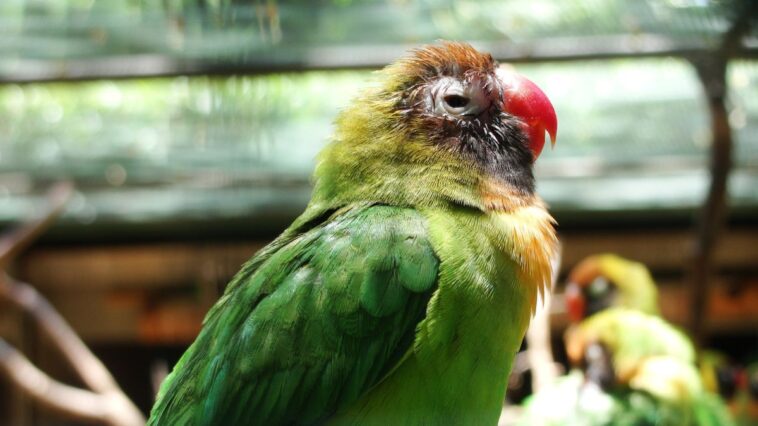Birds, fascinating creatures that inhabit our skies, possess unique sleep patterns distinct from those of mammals. While mammals typically engage in consolidated periods of sleep, birds exhibit polyphasic sleep, characterized by multiple sleep episodes throughout the day and night. In addition to these intriguing sleep patterns, birds have adaptations such as sleeping with one eye open and even sleeping while in flight.
Understanding the sleep habits of birds provides insights into their survival strategies, ecological niches, and physiological needs. In this discussion, we will explore the distinct sleep patterns of birds, their variations across species, and the importance of sleep for their health and overall well-being.
Birds Have Different Sleep Patterns Than Mammals
Birds do have different sleep patterns than mammals. While mammals generally have a consolidated period of sleep, known as monophasic sleep, birds exhibit a form of sleep called polyphasic sleep, which means they have multiple sleep periods throughout the day and night.
Birds have evolved this sleep pattern due to their unique physiological and ecological requirements. Some birds, particularly those active during the day (diurnal birds), must remain alert and responsive to their environment to find food, avoid predators, and engage in social interactions. Therefore, they have adapted to have shorter sleep episodes to meet these demands.
Birds typically sleep in short bursts or naps, lasting for a few seconds or several minutes. They may close one eye or tuck their head under their feathers during these periods. Some birds also engage in unihemispheric sleep, where only one hemisphere of the brain sleeps while the other remains awake. This allows them to stay vigilant and responsive to potential threats while still getting some rest.
In addition to polyphasic sleep, some birds also exhibit other sleep adaptations. For example, migratory birds can sleep while flying, often with one eye open to monitor their surroundings. This ability to sleep during flight helps them conserve energy during long journeys.
It’s worth noting that sleep patterns can vary among different bird species. Some birds, such as nocturnal birds of prey like owls, have more consolidated periods of sleep, similar to mammals. These variations in sleep patterns reflect the diverse lifestyles and ecological niches occupied by different bird species.
Birds Can Sleep With One Eye Open
Birds can sleep with one eye open, known as unihemispheric sleep. This unique adaptation allows them to remain partially alert to their surroundings while still getting some rest.
Unihemispheric sleep is particularly common in bird species that face a higher risk of predation or have other environmental demands that require them to be vigilant. By keeping one eye open, birds can monitor their environment for potential threats while resting or sleeping. This adaptation ensures their safety while allowing them to engage in the physiological processes associated with sleep.
During unihemispheric sleep, half of the bird’s brain is awake while the other half is asleep. This division of brain activity allows the sleeping bird to maintain essential functions such as regulating body temperature, muscle activity, and breathing. In contrast, the awake half of the brain remains alert and responsive to potential dangers.
This ability to sleep with one eye open provides birds with a significant survival advantage, especially when they need to remain vigilant, such as when perched on a branch or when resting in an exposed location.
It’s important to note that not all bird species exhibit unihemispheric sleep, and the extent to which it occurs can vary among different bird groups. However, it is a fascinating adaptation highlighting the remarkable diversity of sleep patterns and behaviors in the animal kingdom.
Some Birds Sleep While Flying
Some birds are indeed capable of sleeping while flying. This ability is particularly observed in certain migratory birds that undertake long-distance flights. Sleeping during flight allows these birds to conserve energy and continue their journey without the need for frequent landings and rest breaks.
During the flight, birds have developed adaptations that enable them to sleep while remaining airborne. For instance, they may enter a state of reduced brain activity called “microsleep” or “nap sleep,” where their brain activity slows down while maintaining basic motor control and flight stability; these brief periods of sleep, usually lasting for a few seconds to minutes, alternate with periods of wakefulness.
To ensure their safety during flight, birds have evolved a mechanism called “wing-loading” that helps maintain stability while sleeping. Wing-loading refers to a bird’s body weight ratio to its wing area. Birds with high wing loading, such as raptors or seabirds, tend to have more stable flight and can sleep for short durations without compromising their safety.
It’s important to note that not all birds sleep while flying. This behavior is primarily observed in species with specific migratory patterns or forage over vast distances. Additionally, birds that sleep while flying often do so in a flock, where the collective vigilance of the group helps reduce the risk of predation.
The ability to sleep while flying is a remarkable adaptation that allows certain bird species to accomplish their long-distance journeys efficiently and without interruption.
Birds Have Different Sleep Stages
Birds have different sleep stages, similar to mammals, although there are some variations in the specific patterns and durations of these stages.
Avian sleep can be broadly categorized into two main types: Rapid Eye Movement (REM) sleep and Slow-Wave Sleep (SWS).
- Rapid Eye Movement (REM) sleep: During REM sleep, birds exhibit characteristics similar to those seen in mammals. Their brain activity becomes more active, and their eyes may move rapidly beneath closed eyelids. During REM sleep, birds may also engage in vocalizations or wing movements. REM sleep is associated with vivid dreams in mammals, but it is not clear whether birds experience similar dream-like states.
- Slow-Wave Sleep (SWS): Slow-Wave Sleep is characterized by slower brain activity and is often associated with deep sleep. During SWS, birds typically have relaxed muscles and show reduced responsiveness to external stimuli. This stage allows for restorative processes, such as tissue repair and energy conservation.
Birds also exhibit unihemispheric sleep, as mentioned earlier, where one hemisphere of the brain sleeps while the other remains awake. This unique adaptation allows birds to maintain some level of alertness and vigilance while still getting some rest.
The duration and distribution of sleep stages in birds can vary among species and depend on their ecological niche, daily activity patterns, and environmental conditions. Some birds may have shorter sleep cycles, with more frequent transitions between sleep stages, while others may have longer periods of sleep.
Overall, while birds share some similarities with mammals regarding sleep stages, there are also notable differences that reflect their unique physiological and ecological characteristics.
The Amount of Sleep Birds Need Varies By Species
The amount of sleep needed by birds can vary significantly among different species. Factors such as ecological niche, daily activity patterns, and physiological requirements influence the sleep a particular bird species needs.
Some bird species have higher energy demands due to their active lifestyles or migratory behaviors, and they may require more sleep to replenish their energy reserves. For example, smaller songbirds that engage in active foraging and frequent flight may need more sleep than larger, sedentary birds.
Additionally, the sleep requirements of birds can also be influenced by environmental factors such as food availability, predation risk, and seasonal changes. For instance, during breeding seasons, birds may experience sleep disruptions due to increased territorial activity, courtship behaviors, or nest guarding.
It’s important to note that while birds need sleep for various physiological functions, the specific duration and sleep patterns can vary. Some bird species may have shorter sleep episodes throughout the day, while others may have more consolidated periods of sleep during the night.
Research on avian sleep is ongoing, and scientists continue to study the sleep patterns and requirements of different bird species to gain a deeper understanding of their sleep behavior and its significance in their overall biology and ecology.
Sleep is Crucial For a Bird’s Health and Survival
Like other animals, sleep is crucial for a bird’s health and survival. Adequate and quality sleep is vital in various physiological and behavioral processes essential for a bird’s well-being. Here are some reasons why sleep is crucial for birds:
- Rest and rejuvenation: Sleep provides birds with rest and rejuvenation. It helps them maintain optimal physical conditions for foraging, flying, and evading predators. During sleep, their bodies can recover from physical exertion, replenish energy stores, and repair tissues.
- Cognitive function: Sleep is closely linked to cognitive processes, learning, and memory consolidation. Birds rely on their cognitive abilities for spatial orientation, foraging techniques, and communication. Sufficient sleep allows them to process and retain information effectively, improving their cognitive performance.
- Immune system function: Sleep is essential for the proper functioning of the immune system. It helps regulate immune responses, enhances immune cell activity, and supports the body’s ability to fight off infections and diseases. Birds not getting enough sleep may experience weakened immune systems, making them more vulnerable to health issues.
- Energy conservation: Sleep allows birds to conserve energy. By reducing activity levels during sleep, birds can lower their metabolic rate and conserve energy reserves, particularly during food scarcity or harsh environmental conditions.
- Predation avoidance: Sleep can be vulnerable for birds, as they are less responsive to external stimuli. However, it is crucial for their survival. Birds have adapted various strategies to minimize predation risks during sleep, such as sleeping in groups or choosing safe roosting sites that provide concealment or early warning systems.
Adequate sleep is vital for maintaining a bird’s health, physical condition, cognitive abilities, and immune system function. It helps them stay alert, responsive, and capable of carrying out essential survival behaviors.




